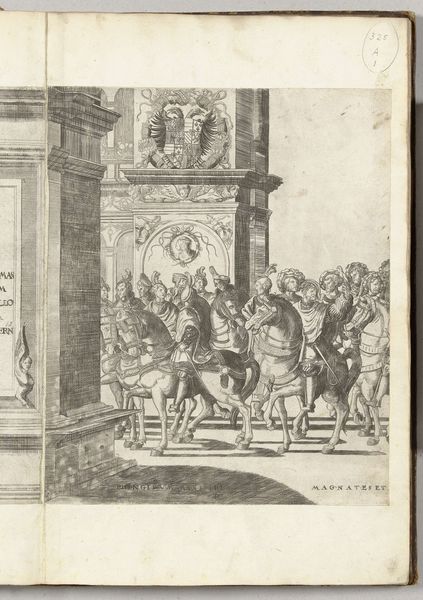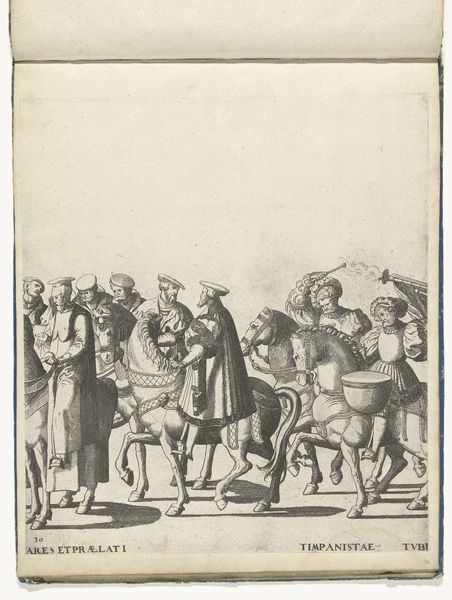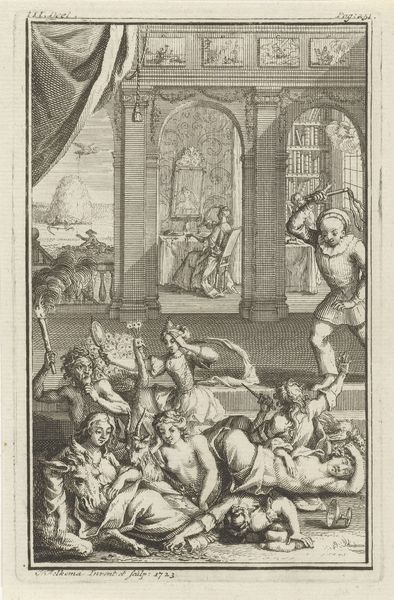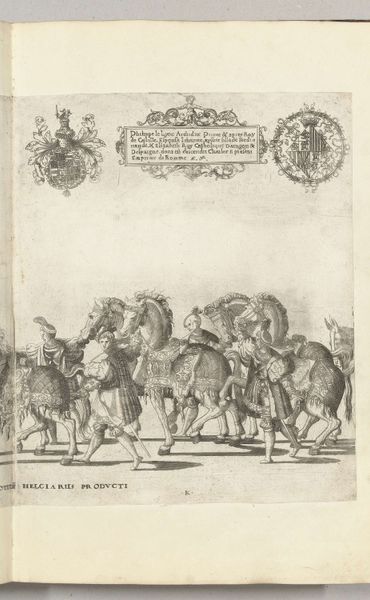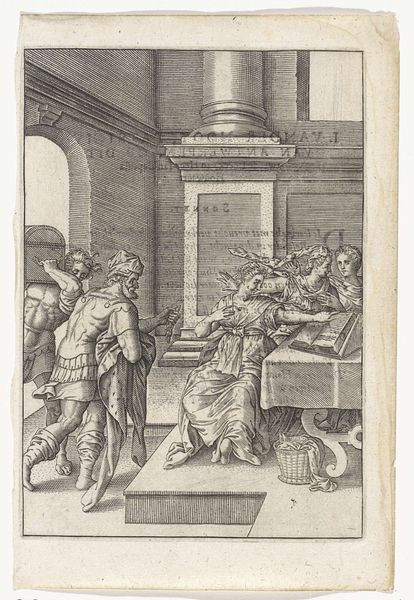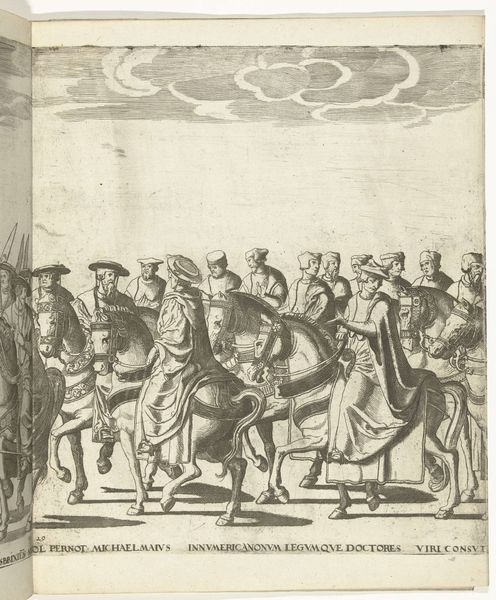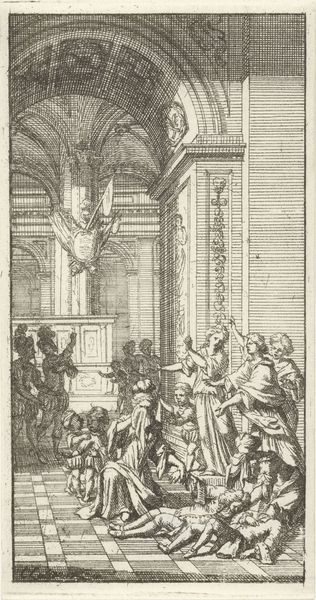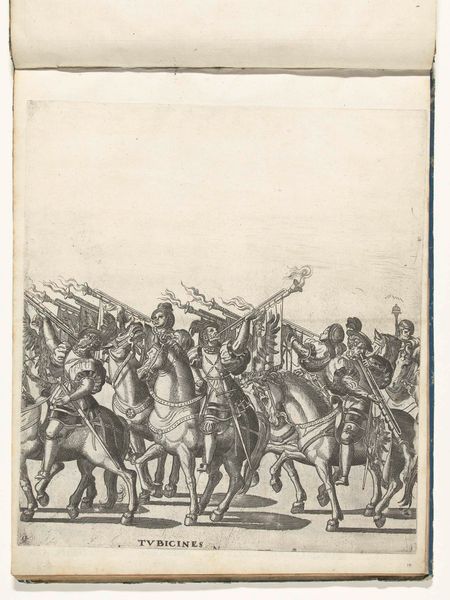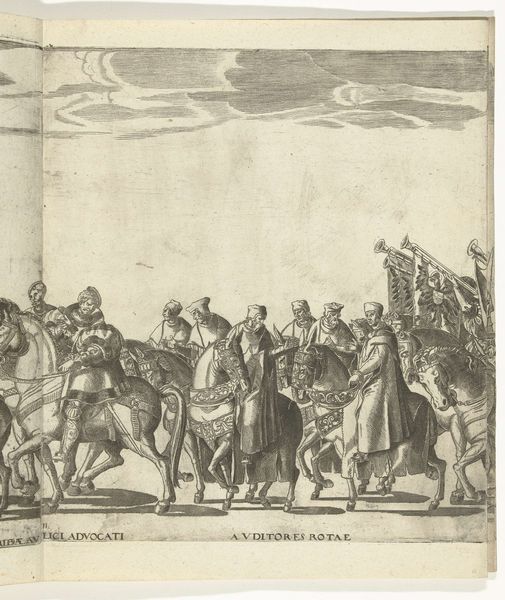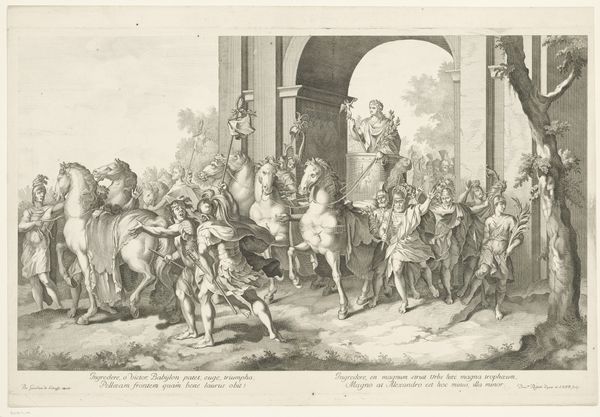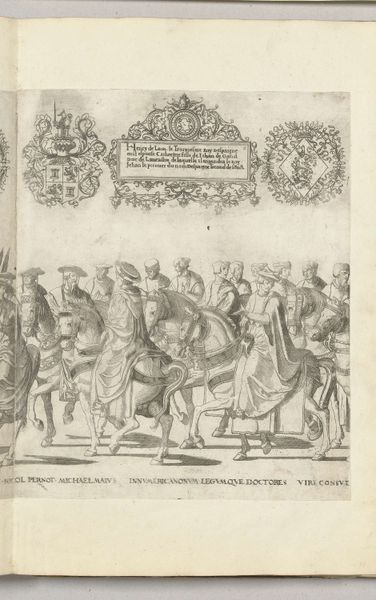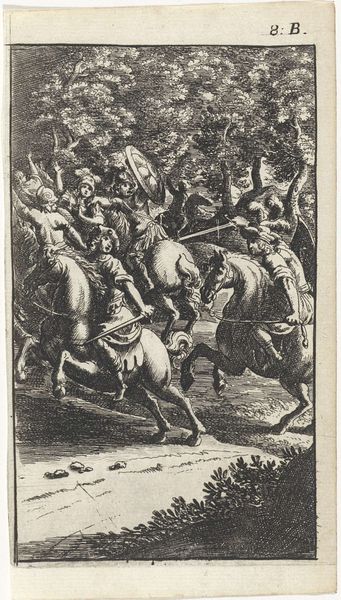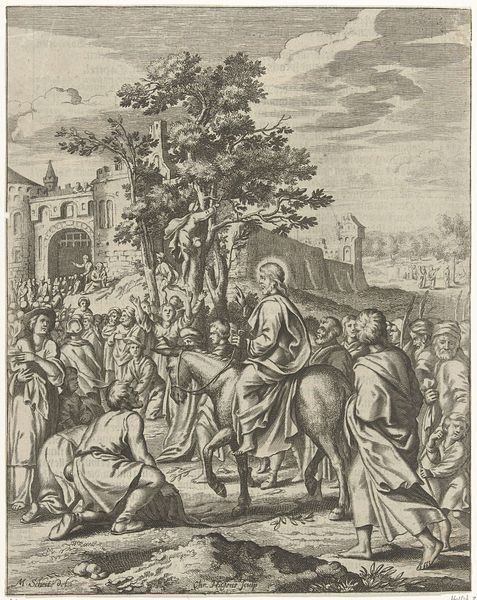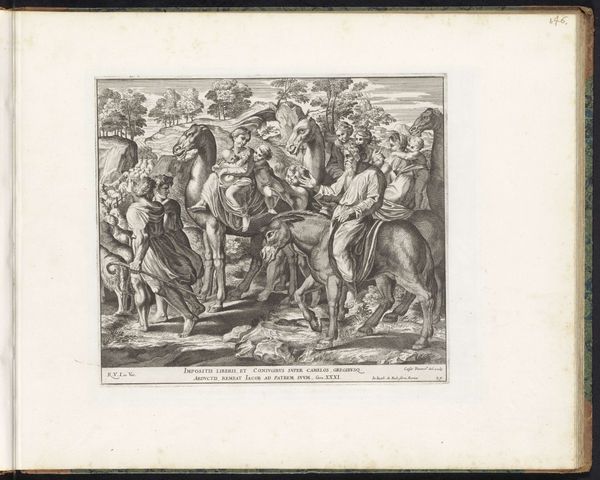
Dimensions: height 330 mm, width 300 mm
Copyright: Rijks Museum: Open Domain
This print, titled "De kop van de stoet bij een triomfpoort," or "The head of the procession at a triumphal arch" was made by Nicolaas Hogenberg in the 16th century. It is an engraving, which means the image was incised into a metal plate, likely copper, and then printed onto paper. Consider the labor involved: the skilled hand of the engraver meticulously cutting lines to create tone and form. Notice how the density of the lines creates depth and shadow, and the fineness of the detail captures the opulence of the scene. Engravings like this were not just aesthetic objects; they were also instruments of power. They disseminated images of rulers and their triumphs, reinforcing social hierarchies. The very act of producing and distributing these prints was a form of early mass media, shaping public perception and solidifying political authority. By understanding the materials, processes, and social context of this engraving, we can appreciate its complexity and significance, challenging the traditional art historical distinction between art and craft.
Comments
No comments
Be the first to comment and join the conversation on the ultimate creative platform.
